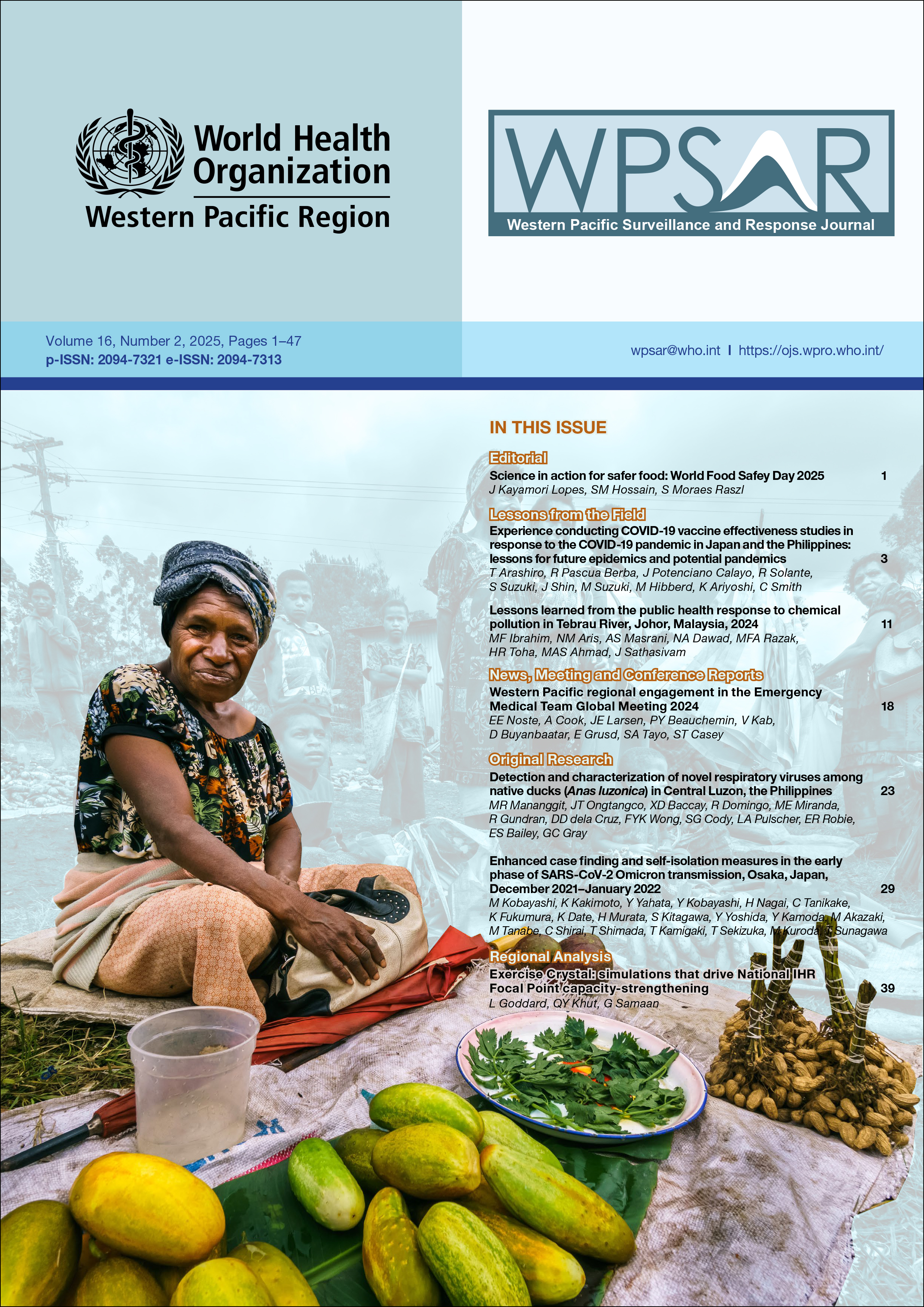Lessons learned from the public health response to chemical pollution in Tebrau River, Johor, Malaysia, 2024
DOI:
https://doi.org/10.5365/wpsar.2025.16.2.1235Keywords:
disaster response, public health events, rapid response teamAbstract
Problem: In September 2024, an illegal toxic waste dumping incident along the Tebrau River in Johor State, Malaysia, raised widespread health concerns in Johor Bahru and Kulai districts. The pollution released a strong, unpleasant odour, resulting in acute symptoms among exposed individuals, including sore throat, dizziness and coughing.
Context: The Tebrau River is a vital waterway supporting urban populations in Johor. This was not the first chemical pollution event in the region, as previous incidents, including the Kim Kim River crisis in 2019, highlighted the region’s vulnerability to such events. The involvement of multiple districts and agencies during the response presented challenges in coordination and data sharing.
Action: The Johor Bahru District Health Office promptly deployed a rapid assessment team to assess the affected areas and implement both active and passive case detection. Community engagement targeted vulnerable populations, such as schoolchildren, to minimize exposure risks. Additional dumping sites identified along the Tebrau River prompted expanded surveillance and a state-level response to coordinate efforts across districts and all health-care facilities.
Outcome: A total of 484 individuals were exposed to the pollution, 334 of whom developed symptoms related to chemical exposure. Timely public health actions consisted of actions to mitigate the impact. Health facilities were placed on high alert and community trust was maintained through proactive engagement. However, gaps in cross-district coordination and challenges accessing environmental data underscored areas for improvement.
Discussion: This incident highlighted the importance of rapid assessment, cross-sector collaboration, community engagement and integrated data systems. It also showed that effective public health action is possible despite environmental data limitations. The strengthening of communication, standardized protocols and real-time data sharing will be critical to improving future chemical pollution events.

